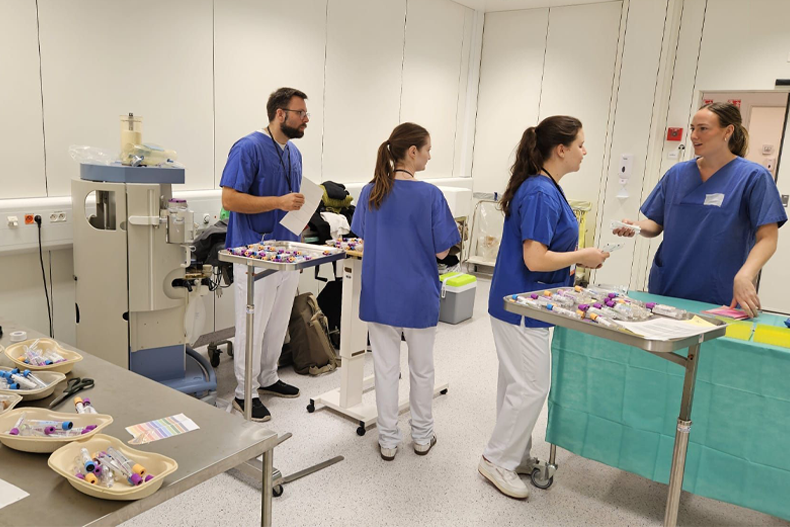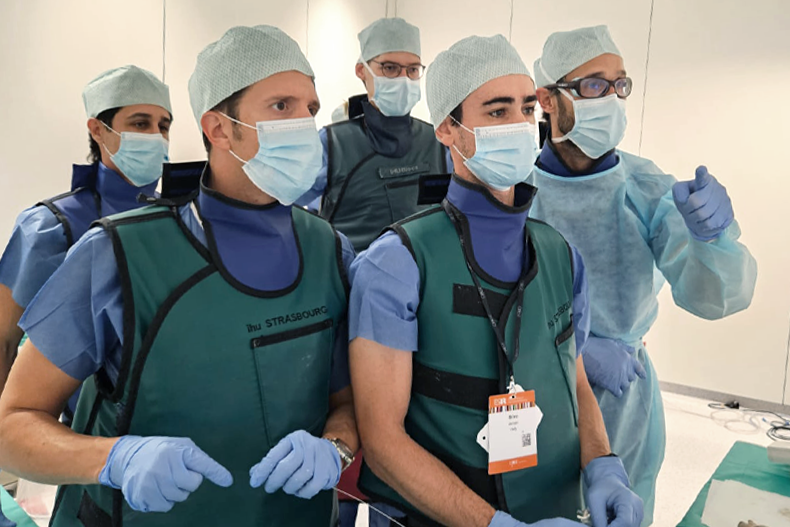Prof. Minko, you recently led hands-on, in vivo animal lab trainings during the ESIR course on MSK embolization in Strasbourg. What led you to do so?
Minko: When I first came across Dr. Yuji Okuno’s early publications on genicular artery embolization, I was fascinated by the concept and its potential to transform how we manage musculoskeletal pain. At that time, I was in Homburg, and we were among the first centers in Germany to start exploring this technique. Seeing its promise firsthand convinced me that MSK embolization will become an important pillar of interventional radiology.
That’s why I was eager to bring this topic to the ESIR curriculum – to share the experience, to teach the nuances of the procedure, and to help others appreciate both its technical and clinical potential. Preparing the course required careful coordination with CIRSE, industry partners, and the dedicated team in Strasbourg, but the effort was absolutely worth it, and the enthusiasm of the participants confirmed how much momentum this field is gaining.
Dr. Taheri-Amin, you had the idea to examine the porcine knee joints after their use in the GAE training. What were some of the preparations you undertook to execute this idea?
Taheri-Amin: The idea came to me quite spontaneously. I remember standing in the shower when I thought: Why not use the porcine knees from the ESIR course for research as well? When I pitched it to Prof. Minko, I honestly expected him to laugh it off. But in his usual way, he immediately shared my enthusiasm and did everything he could to make it happen.
From that moment on, things moved incredibly fast. Together with our research team — and especially with Paula Krüselmann, who was instrumental in organizing the logistics — we managed to design and implement the entire project within just a few weeks. It was a huge team effort, and seeing it come to life was incredibly rewarding.






